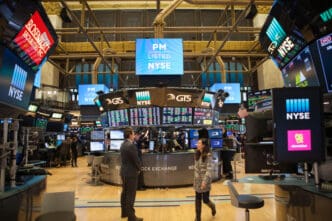Executive Summary
The Story So Far
Why This Matters
Who Thinks What?
The U.S. stock market faces a potential downturn mirroring the 1929 Great Wall Street Crash, according to a Morningstar report that cites share market analysts. This warning comes despite a strong year-to-date performance across major U.S. indexes, which have seen significant gains as of October 2025.
Market Downturn Warnings
U.S. Stock Market expert Jon Wolfenbarger indicated that several factors could drive Wall Street to an “ominous position.” These include current market sentiment, escalating debt levels, economic weakness, limited policy tools, global economic uncertainty, and tariffs imposed by Donald Trump. Financial journalist Andrew Ross Sorkin also predicted a market crash, citing signs of a market bubble, widespread overbuying, and the withdrawal of financial regulations.
Adding to these concerns, IMF chief Kristalina Georgieva has issued a warning regarding the potential negative influence of artificial intelligence on the global economy.
Current Market Performance
Despite these dire predictions, U.S. stock market indexes have shown robust performance throughout the year. As of the current period, the S&P 500 has climbed 14.5%, the Dow Jones Industrial Average is up 9.8%, the Nasdaq composite has gained 19.1%, and the Russell 2000 has risen 12.1%.
On Monday, October 20, 2025, major indexes continued their upward trend. The S&P 500 rose 1.1% to 6,735.13, closing within 0.3% of its all-time high. The Dow Jones Industrial Average also increased by 1.1% to 46,706.58, while the Nasdaq composite saw a 1.4% gain to 22,990.54. The Russell 2000 index of smaller companies advanced 1.9% to 2,499.91.
Easing Concerns and Other Factors
Some immediate market anxieties have shown signs of easing. Concerns over Donald Trump’s threats of higher tariffs on China, which previously triggered significant Wall Street swings, lessened after Trump indicated such high tax rates were unsustainable. Similarly, worries within the banking industry have subsided, as stocks of smaller and midsized banks recovered some losses following recent warnings about potentially problematic loans.
Outlook
The U.S. stock market presents a dichotomy of strong current performance against expert warnings of a looming bear market, fueled by a range of economic and policy-related factors. While some immediate concerns have eased, analysts continue to highlight underlying fragilities that could lead to a significant market correction.







